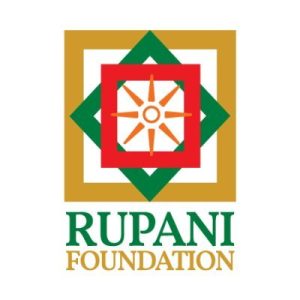After the U.S. military withdrawal from Afghanistan, more than 5,000 Afghan newcomers were welcomed to Houston, Texas. For Rupani Foundation, an ethnic community-based organization (ECBO) in Houston, the evacuation posed many challenges but also presented an opportunity to engage with the families we serve in a more meaningful way. This blog post shares some of our key takeaways.
Challenging Circumstances
Rupani Foundation isn’t a resettlement agency, but a traditional nonprofit social service organization that serves refugee, immigrant, and low-income families in the Greater Houston Area. Our focus is on early childhood development and case management. When the new Afghan families began to arrive in our service area around mid-2022, we looked forward to digging into our organizational data to learn which of our programmatic interventions might be best for supporting these newcomers. As we started serving the families, however, we realized that more needed to be done. Our team began reviewing community needs assessments, demographic reports, asset maps, and other types of data. We also focused on engaging with the families to continuously learn more—listening to them as culturally aware staff.
A Powerful Suggestion
When we were getting ready for the new Afghan families’ arrival, we received a suggestion from our grant officer at the Episcopal Health Foundation—one of our funding partners—to meet with their community engagement officer to discuss strategies around “activating community voice.” We were of two minds: on the one hand, we felt like we didn’t have enough time to pause our team’s focus on preparing for an imminent ramp-up, but on the other hand, this seemed like a unique professional development opportunity for our staff. Besides, this was a recommendation from our grant officer (and in our experience, it’s best practice to follow such proposals).
What followed was transformative in a manner well beyond professional development. Over the course of a few training sessions, our community engagement officer, Troy Bush-DiDonato, completely changed how we viewed community and family engagement. We discovered how easy—and possibly harmful—it was for us to assume that, as culturally competent service providers, we were also necessarily masters of engagement and incorporating community voices to inform our work. We learned that there are tested models of community engagement that can maximize participant voices to not only inform service delivery but also set the stage for positive program outcomes and improved social capital among participants.
Five Key Phases
Troy worked with our staff to develop actionable strategies to appropriately incorporate community stakeholder voices into program and service planning and decision-making. Troy cited elements from the Centers for Disease Control and Prevention (CDC) Committee for Community Engagement. As a result, to this day, the following diagram of the Community Engagement Continuum informs the Rupani Foundation’s program design and is an integral part of our Standard Operating Procedures.
The model/diagram depicts a continuum that comprises the following five key phases (in order):
- Outreach
- Consult
- Involve
- Collaborate
- Shared Leadership
The diagram below sums up the importance of a model emphasizing collaboration, active participation, and shared decision-making between community members and public health organizations. It recognizes the importance of building trust, fostering relationships, and involving the community in all program development, implementation, and evaluation stages.

With this approach in mind, we connected with Afghan mothers through shared acquaintances and listened to their concerns. We needed to have multiple interactions to build trust and rapport, but our persistent efforts paid off, and in return we gained insight that helped shape the way we deliver programs to all our families. All the while, we were mindful of their cultural context.
Once we solidified our plan, we established the Afghan Mothers’ Action Committee (MAC), giving them a voice in decision-making. The committee members were crucial links, improving our bond with Afghan mothers and widening our reach within the community. Most importantly, the committee served as a platform for cultivating new community leaders among Afghan women. Although we did not have funds solely dedicated to serve Afghan newcomers, we were able to adjust deliverables and identify funds that could be used to assist these families.
But deep-seated trauma, coupled with substantial cultural barriers and societal and gender expectations, made it even more challenging to foster an environment conducive to reciprocal communication and to effectively incorporate their insights and direction into our services.
Fortunately, Troy helped us unpack some strategic approaches to achieving our community engagement strategy. Below are the results we achieved and three key recommendations based on what we learned.
Results
The MAC took on its own structure, meeting separately from our typical program groups and discussing items often far outside our usual programmatic purview. The Afghan mothers expressed an interest in learning English, so we’re now offering them ESL classes that are specific to their needs. Attendance and participation in these classes are strong. Husbands are also starting to participate in these classes, which positions the women as leaders in their community.
Some women also expressed interest in learning how to drive, so we are now facilitating access to driving courses. Other notable areas of knowledge that women have gained from the MAC include insights on school systems, civic and social responsibility, safety, and transit.
Three Key Recommendations
Build Trust and Relationships
Recognize that trust is not automatically granted but is built through open communication, active listening, and meaningful engagement. Invest time in building relationships with community leaders, organizations, and individuals to foster trust and create a safe space for dialogue. For us, prior program work demonstrated our commitment to serving local communities. The Rupani Foundation’s programs have garnered support and partnership from the City of Houston, the Children’s Museum, County officials, and local Houston HeadStart programs.
Identify Community Assets and Resources
Identify existing assets and resources that can be leveraged to support Afghan mothers. These can include schools, cultural organizations, faith-based groups, libraries, and other community-based services. Tapping into these resources diversifies programming, increases the effectiveness and sustainability of family support services, and also can result in the development of forums (safe spaces) to conduct meetings with Afghan women from the communities we serve.
Commit to Inclusive Decision-Making
Involving community members, service providers, and other stakeholders in decision-making creates a sense of ownership and empowerment. This participatory approach leads to more effective and sustainable interventions that better align with the needs and goals of the community. The Afghan mothers we serve formed our first Mothers’ Action Committee alongside our program staff and with the support of the residential apartment community staff. They committed to prioritizing community voice above all others in shared decision-making around our collaborative partnerships.
Are You an ECBO Leader Looking for Professional Development? Join Switchboard’s Community of Practice!
Switchboard is pleased to announce that we have launched a new community of practice (CoP) for ethnic community-based organization (ECBO) leaders, facilitated by the Karen Organization of San Diego (KOSD). This CoP is designed for ECBO leaders, which we define as people who have a leadership role in the management and sustainability of an ethnic community-based organization. This CoP meets on the last Tuesday of each month. Register for the next meeting here.










